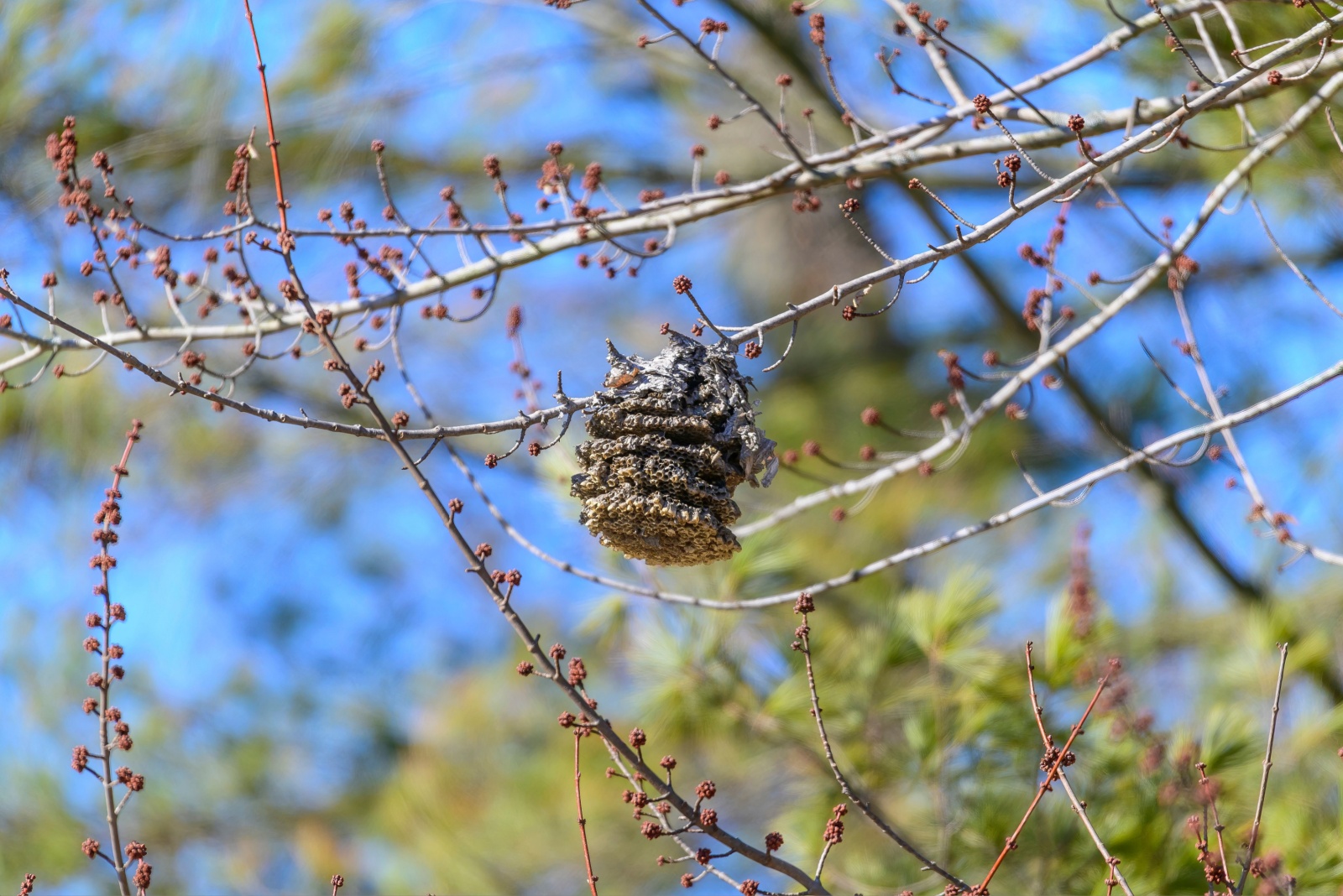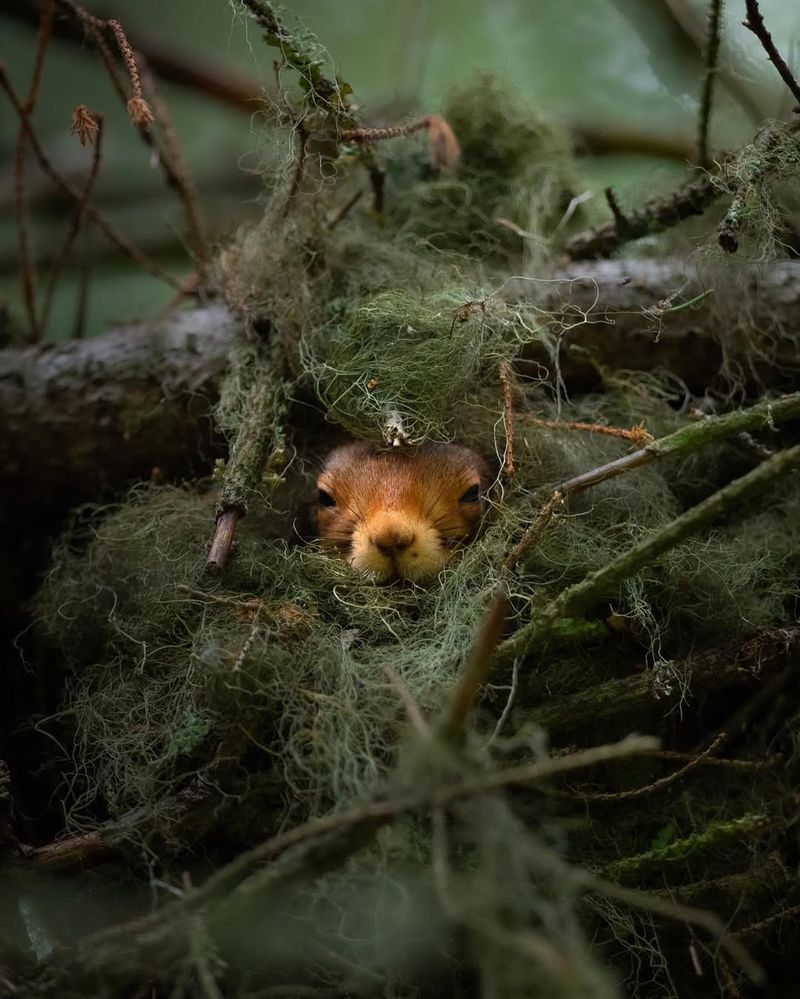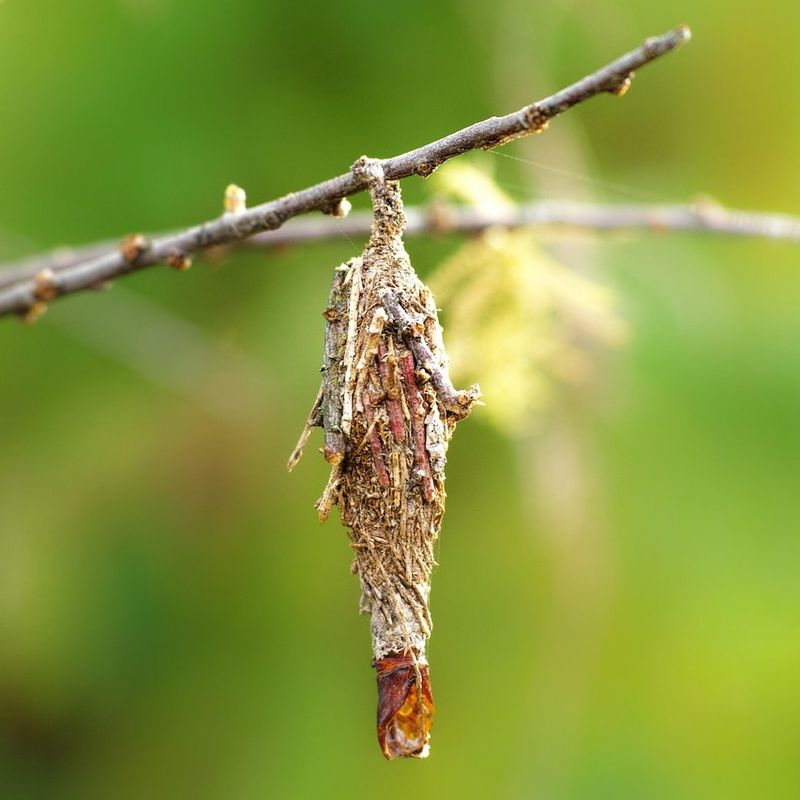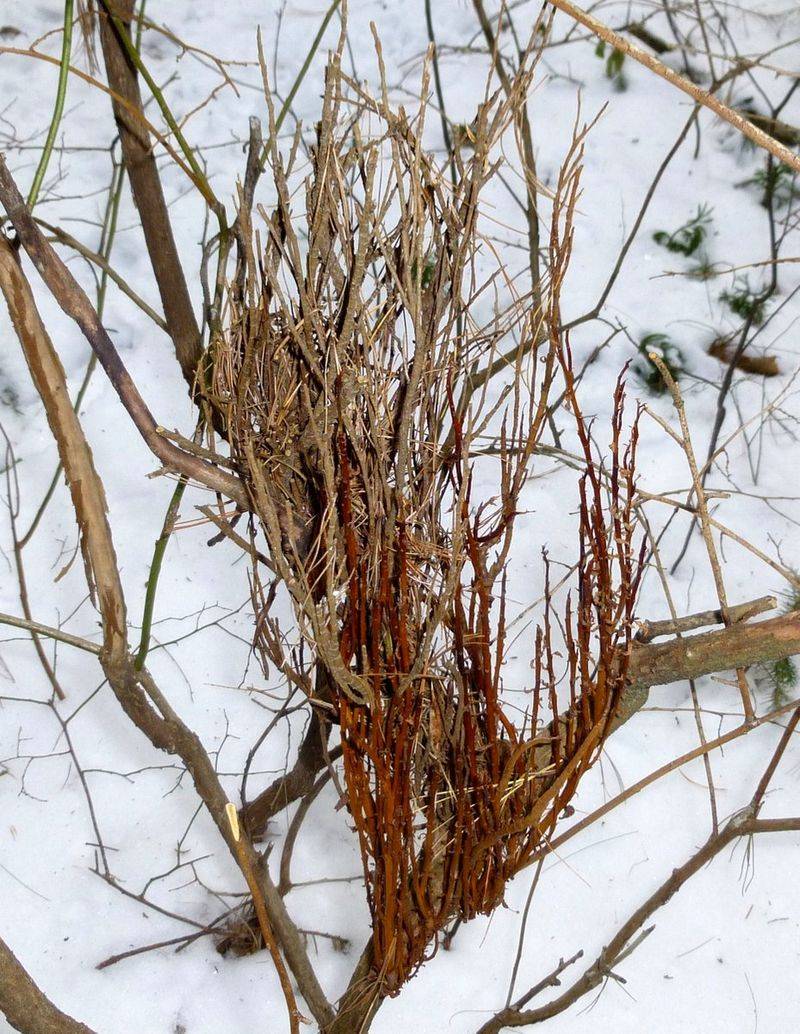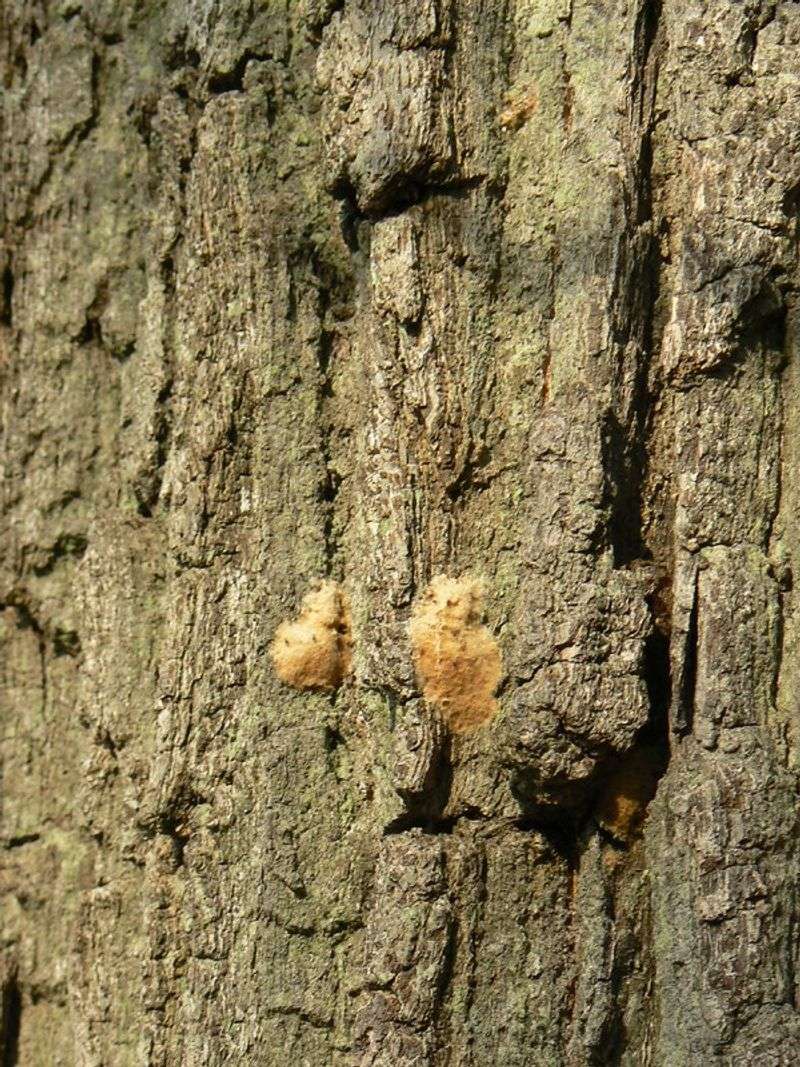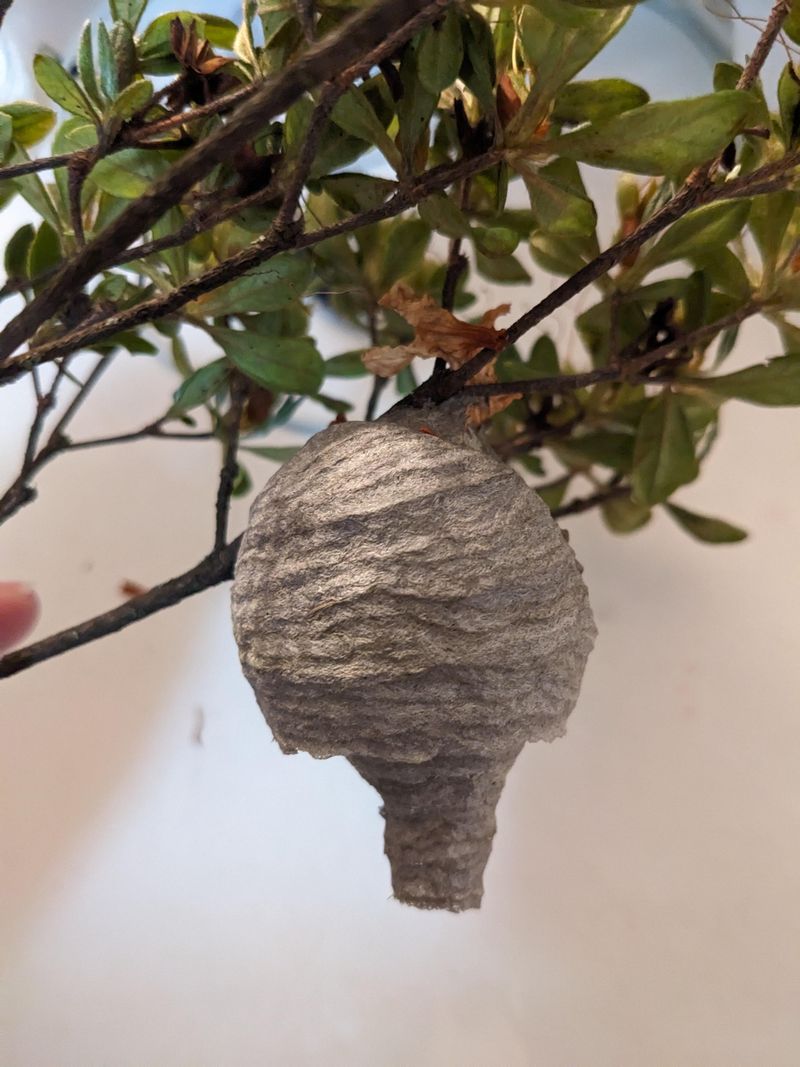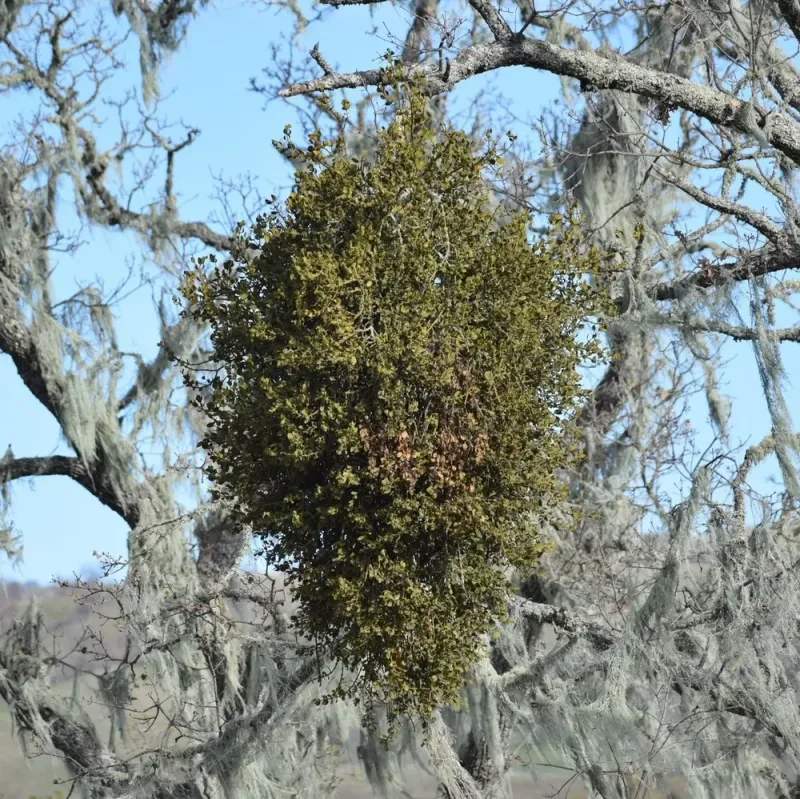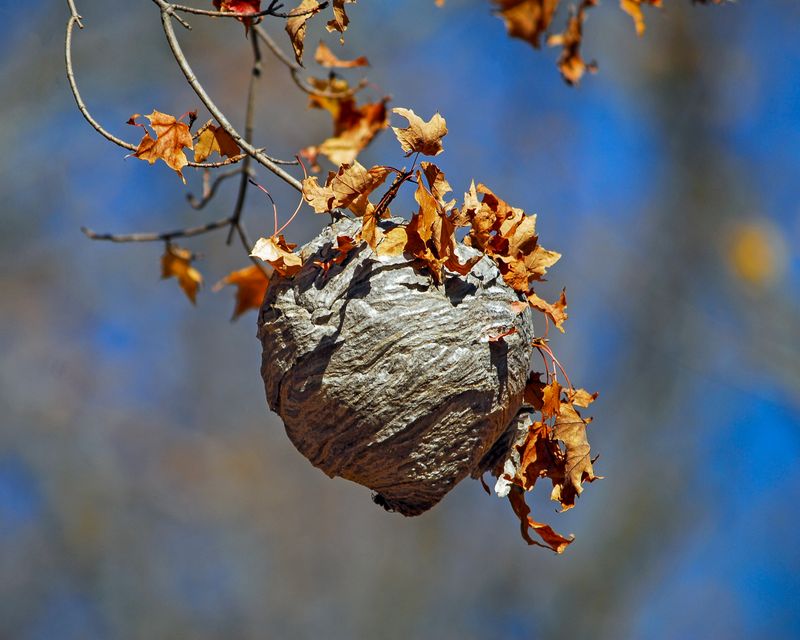When you spot something that looks like a bird’s nest high up in your Ohio tree, you might be in for a surprise. Not every clump of twigs or round bundle is actually a home for our feathered friends.
Several other creatures and natural formations can trick even experienced nature watchers into thinking they’ve found a cozy nest when it’s something completely different.
1. Squirrel Dreys Fooling Your Eyes
Gray squirrels build leafy homes called dreys that often get mistaken for bird nests throughout Ohio’s wooded areas. Unlike bird nests made primarily from twigs, dreys use leaves, bark strips, and moss woven into basketball-sized spheres.
You’ll typically spot them wedged between branches or tucked against tree trunks, especially during fall when leaves drop and reveal their hiding spots. Squirrels create multiple dreys as backup shelters, so finding several in one tree isn’t unusual at all.
2. Bagworm Cases Hanging Around
Those small cone-shaped bundles dangling from your tree branches might look like tiny nests, but they’re actually bagworm cases. These caterpillars construct protective homes from silk and bits of the host tree’s leaves or needles.
Bagworms can seriously damage evergreens and other trees if left unchecked, stripping foliage as they feed. Each case houses a single caterpillar that eventually transforms into a moth, with females never leaving their bags even as adults.
3. Witches’ Broom Growth Clusters
Sometimes a dense cluster of twigs sprouting from one spot creates a nest-like appearance called a witches’ broom. Fungi, mites, or viral infections cause trees to produce these abnormal growths that resemble tangled bird homes.
Hackberry trees across Ohio commonly develop witches’ brooms, creating dozens of twig masses throughout their canopy. While they look concerning, most witches’ brooms don’t seriously harm the tree’s overall health, though they do create permanent odd-looking formations.
4. Gypsy Moth Egg Masses Waiting
Fuzzy tan patches stuck to tree bark often fool people into thinking they’re looking at nesting material. Gypsy moths lay egg masses covered in buff-colored hairs that protect hundreds of eggs through Ohio’s harsh winters.
Each mass measures about an inch long and feels spongy to the touch, appearing on trunks, branches, and even outdoor furniture. Scraping these masses off and destroying them before spring prevents swarms of hungry caterpillars from defoliating your trees later.
5. Paper Wasp Nests Under Construction
Early in spring, you might notice what looks like a small gray nest forming on tree branches throughout Ohio yards. Paper wasps build open-comb nests from chewed wood fibers mixed with saliva, creating papery structures.
Unlike enclosed hornet nests, paper wasp homes show visible hexagonal cells where larvae develop. Queens start these nests alone before workers take over construction duties, gradually expanding the umbrella-shaped creation throughout summer months until it houses hundreds of wasps.
6. Mistletoe Bunches Growing Strong
Round green clumps high in tree branches might look like nests from below, but they’re actually mistletoe plants parasitizing your Ohio trees. This evergreen plant sends roots into host branches, stealing water and nutrients while creating bushy growth.
Mistletoe stays green year-round, making it especially noticeable during winter when surrounding leaves have fallen. Birds spread mistletoe seeds between trees, and heavy infestations can weaken or eventually kill host trees over time.
7. Old Hornet Nests Left Behind
Large gray papery structures resembling oversized nests often remain attached to Ohio trees long after their inhabitants have died off. Bald-faced hornets construct these football-shaped homes from wood pulp, housing colonies until the first hard freeze kills everyone except next year’s queens.
By winter, these abandoned nests pose no danger since hornets never reuse old homes. The intricate paper layers and architectural design make them fascinating to examine up close once you’re certain they’re truly vacant.

